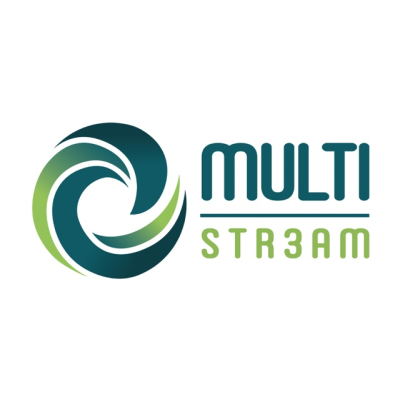
MULTI-STR3AM
A sustainable multi-strain, multi-method, multi-product microalgae biorefinery integrating industrial side streams to create high-value products for food, feed and fragrance

A sustainable multi-strain, multi-method, multi-product microalgae biorefinery integrating industrial side streams to create high-value products for food, feed and fragrance
With an increasing population and a consequent growing demand for land for food, new sources of food, feed and industrial raw materials are urgently required. Microalgae has the potential to help bridge that gap without concurrent pressure on land use and without increasing the use of petrochemical-based resources. The full nutritional profile of microalgae includes protein, carbohydrates, lipids and trace nutrients such as vitamins and antioxidants and can provide food, feed, energy, pharmaceuticals and cosmetics. Its protein content is particularly high.
However, despite this clear promise, microalgae as a resource remains underdeveloped and underexploited. This means there is – currently – insufficient capacity to provide a realistic, reliable alternative to existing sources. The barriers to widespread uptake are industrial – economies of scale have not been achieved – and cost-related – the production processes are relatively expensive.
The MULTI-STR3AM project is designed to overcome these barriers. It will use a three-pillar approach: improving the strains of microalgae to boost productivity; designing and engineering more cost-effective production techniques; exploiting sidestreams, biomass and upscaling production to be able to provide a realistic alternative supply. It will do this within a centralised MULTI-biorefinery, valorising all biomass fractions using a sustainable and economically viable production model. Ultimately, the MULTI-STR3AM project aims to create a roadmap for establishing economically viable microalgae production and exploration, preserving resources and contributing to the EU’s circular economy goals.
The overarching objective of the MULTI-STR3AM project is to provide solutions to the growing demand for alternative sources of raw ingredients for food, feed and other applications. Within this, it will pursue a number of specific objectives. It will:
By achieving its overall objectives, the MULTI-STR3AM project will demonstrate the validity and feasibility of using a multi-refinery approach to microalgae processing and valorisation. In addition to this, it will also make contributions to specific BBI JU KPIs through:
In addition, the MULTI-STR3AM project will bring specific environmental benefits. It will increase overall resource efficiency by at least 20 % over conventional cultivation/processing approaches. It will also reduce associated energy consumption and GHG emissions by at least 20 % over current state-of-the-art.